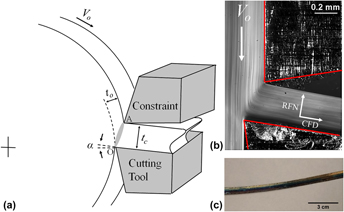Crossref Citations
This article has been cited by the following publications. This list is generated based on data provided by
Crossref.
Kustas, Andrew B.
Susan, Donald F.
Johnson, Kyle L.
Whetten, Shaun R.
Rodriguez, Mark A.
Dagel, Daryl J.
Michael, Joseph R.
Keicher, David M.
and
Argibay, Nicolas
2018.
Characterization of the Fe-Co-1.5V soft ferromagnetic alloy processed by Laser Engineered Net Shaping (LENS).
Additive Manufacturing,
Vol. 21,
Issue. ,
p.
41.
Kustas, Andrew B.
Johnson, David R.
Trumble, Kevin P.
and
Chandrasekar, Srinivasan
2018.
Enhancing workability in sheet production of high silicon content electrical steel through large shear deformation.
Journal of Materials Processing Technology,
Vol. 257,
Issue. ,
p.
155.
Kustas, Andrew B.
Michael, Joseph R.
Susan, Don F.
Karaman, Ibrahim
and
Jozaghi, Taymaz
2018.
Equal channel angular extrusion for bulk processing of Fe–Co–2V soft magnetic alloys, part II: Texture analysis and magnetic properties.
Journal of Materials Research,
Vol. 33,
Issue. 15,
p.
2176.
Kustas, Andrew B.
Susan, Donald F.
and
Monson, Todd
2022.
Emerging Opportunities in Manufacturing Bulk Soft-Magnetic Alloys for Energy Applications: A Review.
JOM,
Vol. 74,
Issue. 4,
p.
1306.
Karami, Rasoul
Butler, David
and
Tamimi, Saeed
2024.
Manufacturing of non-grain-oriented electrical steels: review.
The International Journal of Advanced Manufacturing Technology,
Vol. 133,
Issue. 3-4,
p.
1083.
Mörée, Gustav
and
Leijon, Mats
2024.
Iron loss models: A review of simplified models of magnetization losses in electrical machines.
Journal of Magnetism and Magnetic Materials,
Vol. 609,
Issue. ,
p.
172163.
Adamczyk, Jesse M.
Birchall, Sarah E.
Rothermel, Ethan T.
Whetten, Shaun R.
Barrick, Erin J.
Pearce, Charles J.
Delaney, Robert E.
Pegues, Jonathan W.
Johnson, Kyle L.
Susan, Donald F.
Monson, Todd C.
and
Kustas, Andrew B.
2024.
Characterization of Fe-6Si Soft Magnetic Alloy Produced by Laser-Directed Energy Deposition Additive Manufacturing.
JOM,
Vol. 76,
Issue. 2,
p.
863.
Karami, Rasoul
Butler, David
Javadi, Yashar
and
Tamimi, Saeed
2025.
Additive manufacturing innovations: Microstructure optimisation for ultra-high silicon electrical steel components.
Materials Characterization,
Vol. 224,
Issue. ,
p.
115002.
He, Youliang
and
Kestens, Leo AI
2025.
The processing, microstructure, texture, and magnetic properties of electrical steels: A review.
International Materials Reviews,
